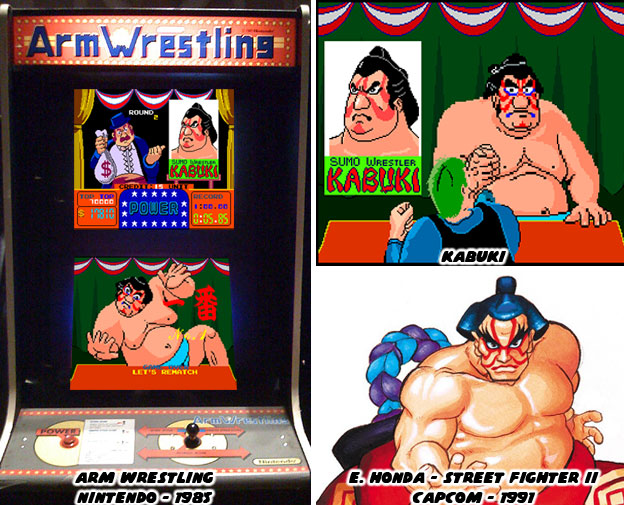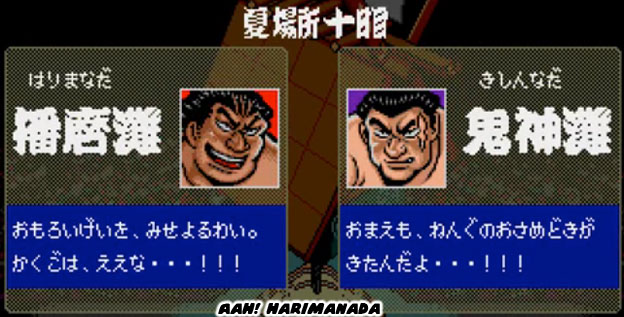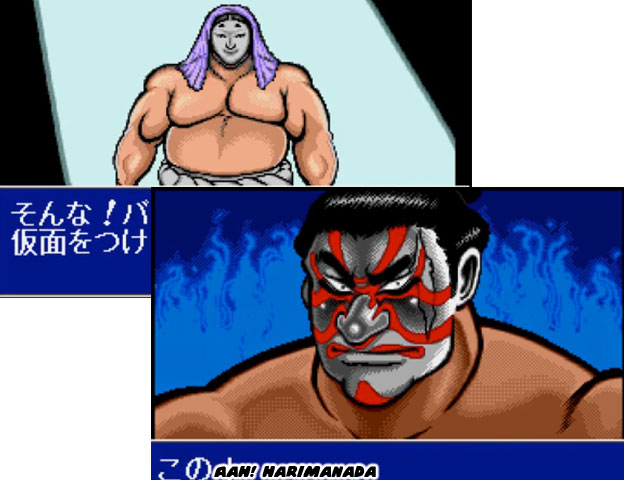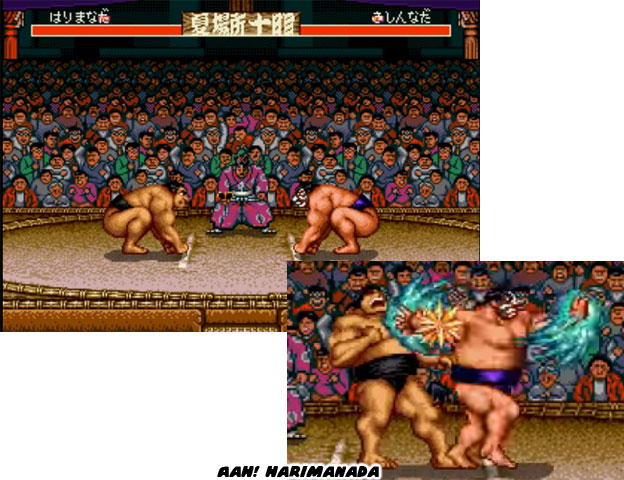
I credit Nintendo with developing a series of international archetypes in the original Punch-Out!! The various boxers from around the world had unique personality traits to go along with their memorable appearances. These caricatures would be emulated by Capcom and various studios when designing the first crop of fighting game all-stars. In 1991 E. Honda would take a page directly from Kabuki. Few remembered the Nintendo character came first and that was okay. Capcom was helping spread fight culture through their characters. The same year that Street Fighter II came out a manga called Aah! Harimanada debuted. The series was by Kei Sadayasu and would eventually be adapted into an anime series and fighting game as well. The series featured the brash Isao Harimanada, a sumo wrestler who was arrogant and insulting to opponents. He was a very dramatic character that would wear masks and headgear to the tournaments, including samurai helmets. The character would boast that that he would beat the 69-consecutive win streak of Sadaji Futabayama or retire trying. The series was kind of boring. It was a definite "Mary Sue" sports hero from Mr. Sadayasu. Isao could be rude and self absorbed and was somehow supposed to be appealing to young readers. As far as fictional sports figures go there was nothing that stood out for the hero. Audiences could guess that he would indeed reach 70 consecutive victories over the series. There was no real chance that he would lose any match. The only thing that changed were which techniques he used in order to beat his opponents. For that matter the rivals were far more interesting than the main character. One of the former champs that gave Isao a run for his money was named Kishin-Nada. The character had a nasty scar on the side of his head.

Kishin lost the match and felt humiliated by Isao, as did many of his opponents. They were all working hard to get a rematch but none took it more personal than Kishin. At the end of Isao's streak a mysterious figure appeared. This sumo was a former champ and he wore a creepy wakaonna, or girl mask from the Noh plays. It was as if Isao would have to wrestle someone with the same flare for the dramatic. When the wrestler removed the mask audiences gasped at his painted face. It was sacrilege that a sumo wrestler would actually wear kabuki face paint into the ring. This figure was trying to create a personae that was every bit as dramatic as Isao. Of course eagle-eyed readers saw that despite the face paint there was a noticeable scar on the side of this new character's face. This fighter called himself Kishin-Ryu, the dragon or ultimate version of Kishin-Nada. I'd like to think that this was Mr. Sadayasu's nod to E. Honda.

There was a Mega Drive (Sega Genesis) version of Aah! Harimanada that came out in 1993. The game by Megasoft was sorely lacking in the control department. Audiences could play through a campaign mode and every battle in the manga was presented in the same order within the game. After a few matches the game felt tedious. It would be a grind to try and beat 70 opponents in a row. What was cool however was how each sumo had their own strength and weaknesses. These things manifested as special attacks and super strikes. Imagine a version of Street Fighter but solely made up of sumo wrestlers. Super thrusts, headbutts, throws and slaps were some of the many techniques players could learn. A dozen characters each had their own super attacks that could be figured out and mastered in a two-player mode. I often wonder how Street Fighter would have been if characters had entirely new move sets applied to them in each sequel. What would have happened to E. Honda if he had new moves added to his library in Turbo, Hyper and Super versions of the game.

I hope you think about this rare series and the flamboyant sumo wrestler that appeared in other games the next time you play Street Fighter. Truth of course was much more interesting than fiction. Isao Harimanada was nowhere near as interesting as the real Futabayama. The record-setting sumo wrestler was blind in one eye but he never revealed this to anyone until after he retired. His opponents could have of course used this information against him. He was certainly much more humble about his abilities than Isao. Maybe a fighting game might base a character after a real legend. Stranger things have happened! As always if you enjoyed this blog and would like to sponsor me please visit my Patreon page and consider donating each month, even as little as $1 would help make better blogs and even podcasts!

No comments:
Post a Comment